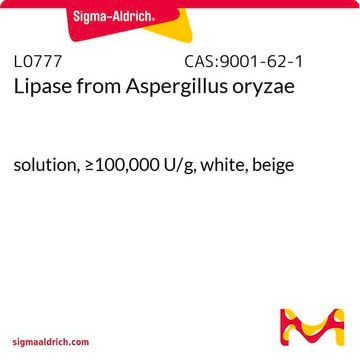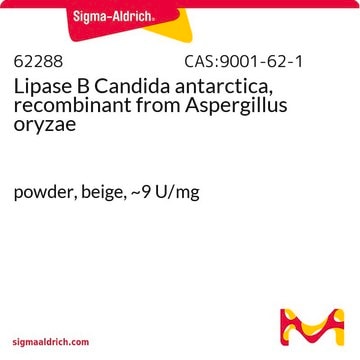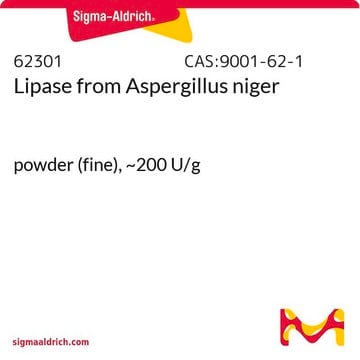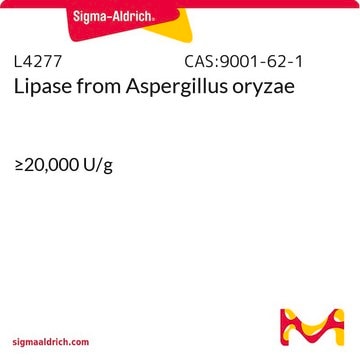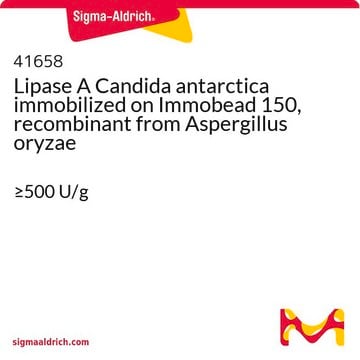L3170
Lipase from Candida sp.
recombinant, expressed in Aspergillus niger
Synonym(s):
Lipozyme CALB L
About This Item
Recommended Products
recombinant
expressed in Aspergillus niger
form
aqueous solution
enzyme activity
≥5000 LU/g
greener alternative product characteristics
Waste Prevention
Design for Energy Efficiency
Learn more about the Principles of Green Chemistry.
sustainability
Greener Alternative Product
greener alternative category
storage temp.
2-8°C
Looking for similar products? Visit Product Comparison Guide
Related Categories
General description
Application
- in Gold nanoparticles (AuNPs) conjugate preparation for biophysical studies
- in lipase activity assay
- for immobilization with Immobead-350
Biochem/physiol Actions
Analysis Note
Storage Class Code
10 - Combustible liquids
WGK
WGK 1
Flash Point(F)
Not applicable
Flash Point(C)
Not applicable
Certificates of Analysis (COA)
Search for Certificates of Analysis (COA) by entering the products Lot/Batch Number. Lot and Batch Numbers can be found on a product’s label following the words ‘Lot’ or ‘Batch’.
Already Own This Product?
Find documentation for the products that you have recently purchased in the Document Library.
Customers Also Viewed
Our team of scientists has experience in all areas of research including Life Science, Material Science, Chemical Synthesis, Chromatography, Analytical and many others.
Contact Technical Service

